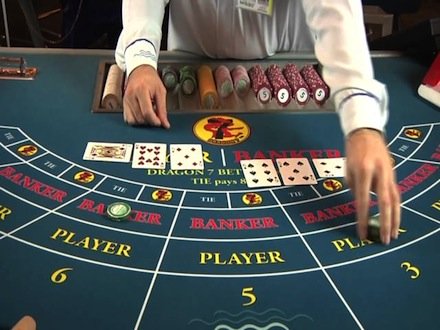The History of Baccarat

The history of card game Baccarat is said to go all the way back to medieval Italy. Over 500 years ago, baccarat started as a card game for the upper class and aristocrats. Now it's three variants (punto banco, chemmy and baccarat banque) are played by many in casinos around the world.
It Began in Italy
The origins are still debated today, but most believe the game of baccarat was created in Italy in the 1400s by a man named Felix Falguiere or Falguierein. He called the game “baccara,” Italian for “zero,” because all the tens and face cards were worth zero. (Later on, the French spelling “baccarat” was adopted worldwide.)
It is believed that the Italian game of baccara was based on the old Etruscan legend of a virgin who had to throw a nine-sided die. The result of the throw determined her fate. If she threw an 8 or a 9, then she was elevated to the glory of being a priestess. If she threw a 6 or 7, she was allowed to live but could not take part in any future religious or community events. If she threw lower than 6, she was banished to the sea to drown. Not a nice tale, perhaps, but from it came the initial rules of the card game of baccarat. Although no one today is banished to the sea if they get lower than a 6, they usually lose the baccarat game.
The original baccarat game was played slightly differently than it is today. Cards were dealt by four different dealers, each of the players had an opportunity to be the banker, and players could place bets against other players as well as against the house. Today there is one dealer, bets are generally placed against the house, and the house also serves as the banker.
Baccarat Chemin de Fer
From Italy, baccarat moved to neighboring France, where it was known as Chemin de Fer ("Chemmy"). The game was a favorite of King Charles VIII and the noblemen who surrounded him. Baccarat soon became the rage among the French aristocracy, and remained so for several centuries.
Baccarat also caught on across the channel in England. It was there that Ian Fleming learned how to play baccarat and created the world’s most famous baccarat player, James Bond.
Punto Banco
Over the course of time, the game of baccarat migrated across the ocean to South America and the Caribbean. Baccarat was known as Punto Banco and was adapted to the local culture in many ways. One of the main changes was that the players played against the house only, and not against each other. Also, the casinos acted as the bank; the privilege was not passed to the individual players. This type of baccarat became known as “American Baccarat.”
Then, in the late 1950s,Tommy Renzoni brought the game to the Sands casino in Las Vegas, Nevada, U.S.A.
Baccarat never caught on among the casino gambling public the way casino games like roulette and the slot machines did. So casino owners marketed it as a game for the select few by setting high minimum bets, and hid the tables in special rooms, appointed in posh leather chairs. Naturally, this brought additional attention and added to the allure of the baccarat game.
About Crescent Schools
Looking for a fun and exciting career? Crescent School of Gaming and Bartending can train you for a dynamic, well-paying job in the hospitality or casino industry today.
 You can be ready to bartend in just three weeks. Be around fun people and have cash in your pocket every night as a mixologist, or claim your place in the ever-growing casino gaming industry in as little as three months. Financial aid is available, if qualified. You can start one of Crescent's top-quality programs with no money down.
You can be ready to bartend in just three weeks. Be around fun people and have cash in your pocket every night as a mixologist, or claim your place in the ever-growing casino gaming industry in as little as three months. Financial aid is available, if qualified. You can start one of Crescent's top-quality programs with no money down.
Crescent is an accredited bartending and table games dealer school in the United States.
Contact us:Las Vegas: (702) 458-9910
New Orleans: (504) 822-3362
Gulfport: (228) 822-2444